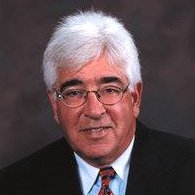Avoiding the Pitfalls of Dental partnership Transitions – Identifying the “What ifs”
May 29, 2012
 My last three blog posts have discussed some of the issues to be aware of regarding the valuation, financing, and timing of dental partnership transitions. I would like to finish up this series with some thoughts on additional stipulations that must be included in a partnership agreement. These are incredibly important, and probably where the most time–many meetings and discussions- needs to be spent when designing the partnership documents. These are what I call the “what ifs”. And contrary to my normal optimistic approach to life, since I have seen so many bad situations–and since partnerships don’t always last–I have to be almost pessimistic at times and design essentially a pre-nup in order to try to anticipate what might happen in the future.
My last three blog posts have discussed some of the issues to be aware of regarding the valuation, financing, and timing of dental partnership transitions. I would like to finish up this series with some thoughts on additional stipulations that must be included in a partnership agreement. These are incredibly important, and probably where the most time–many meetings and discussions- needs to be spent when designing the partnership documents. These are what I call the “what ifs”. And contrary to my normal optimistic approach to life, since I have seen so many bad situations–and since partnerships don’t always last–I have to be almost pessimistic at times and design essentially a pre-nup in order to try to anticipate what might happen in the future.
If you agree that the value to the buyer is based on the seller staying on board and being involved in the practice to continue to transfer goodwill and to continue to produce at a high level in order to help pay the bills, then all kinds of financial penalties have to be written into the agreement to prevent the negative ramifications to the value of the second half of the practice in the event of the death, disability, early retirement ( earlier than agreed to) or professional disgrace to the older partner.
In addition to the above, the challenge is to also try to anticipate every other possible contingency or policy decision that if not identified and planned for has the potential to undermine the expected financial solvency of the dental practice going forward. Some examples would be technology purchases, physical expansion, dental insurance participation, job responsibilities–a methodology for making these kinds of important decisions must be outlined and agreed to. I can tell you that based on my own experience over the past 20 years–this is unlikely. I keep learning from every situation. So please make the time and put in the effort to be as explicit as possible.
I was not kidding when I described partnership documentation being over 100 pages long. I would categorically suggest that a partnership agreement written WITHOUT these many contingencies identified and clarified, is not worth the paper it is printed on.
Avoiding the Pitfalls of Dental Partnerships- Mechanics of the Second Transition
May 15, 2012
 The most important reason that partnerships fail – or become severely compromised – is a lack of preparation for the future. We have all heard the adage: “If you fail to plan, then you plan to fail.” A strategy that says “we’ll cross that bridge when we come to it” is simply not acceptable.
The most important reason that partnerships fail – or become severely compromised – is a lack of preparation for the future. We have all heard the adage: “If you fail to plan, then you plan to fail.” A strategy that says “we’ll cross that bridge when we come to it” is simply not acceptable.
The typical dental partnership is generationally based where an older doctor sells a 50% interest to a younger doctor. Not establishing the value of the second half of the transition and the timing of when that transition will occur is potentially a prescription for disaster. In my opinion, the value of the second half should be determined by the same formula that was used to set the value for the initial buy-in. It is also my opinion that there should be a requirement – not a choice – not the right of first refusal – for the younger doctor to purchase the second half.
This requirement is important from the perspective of both the buyer and the seller. If there is no requirement for the younger partner to purchase the second half, the senior partner might have difficulty finding a buyer. Perhaps someone would want to buy, but they don’t want to be partners with the younger doc. They might be interested in purchasing the entire practice. So the senior doctor in that situation would be at a disadvantage. Conversely, the younger doctor would be at a disadvantage if the senior doctor decides to sell to Osama Bin Laden’s brother because he can’t find any other buyer. Now the younger doctor might have to be partners with someone he doesn’t like or respect. So when I am involved in forming the initial partnership, I insist that the younger doctor be REQUIRED to buy the second half.
The younger doctor will then be in total control of his/her destiny. Probably bring in an associate – not a partner – and usually make a lot more money. Future partnership can then become an option if the dynamics are positive.
Avoiding the Pitfalls of Dental Partnership Transitions – Owner Financing
May 1, 2012
 Many years ago, it was common practice for the selling doctor to finance the purchase price that the associate had agreed to pay for an equity position in the dental practice. The selling doctor would charge a competitive interest rate and typically the note would be for a 5 to 10 year time period. With this approach, the seller receives the purchase price in little pieces rather than the full amount. I would much rather see the seller get the full price all at once. You can do a lot of neat tax strategies with retirement plans. And there is certainly a time value for money invested. I am strongly opposed to owner financing for the following reasons.
Many years ago, it was common practice for the selling doctor to finance the purchase price that the associate had agreed to pay for an equity position in the dental practice. The selling doctor would charge a competitive interest rate and typically the note would be for a 5 to 10 year time period. With this approach, the seller receives the purchase price in little pieces rather than the full amount. I would much rather see the seller get the full price all at once. You can do a lot of neat tax strategies with retirement plans. And there is certainly a time value for money invested. I am strongly opposed to owner financing for the following reasons.
There is no need. Nowadays there are many banks and lending institutions that have programs specifically tailored for dental practice acquisitions. I am constantly amazed at how easy it is for a young dentist–even with significant education debt–to borrow 100% of the money needed strictly on a signature. No collateral. Even at the depth of the financial mortgage crisis in 2008 in 2009, dentists were still able to get their financing. This was in stark contrast to many successful small business owners in the same community who were not able to secure loans.
Practice values have increased so buyers often need more time to amortize the purchase price in order to make the purchase affordable. I would not want the selling doctor to hold paper for that long. That is what banks are for.
The biggest negative to the seller is the risk involved by acting as the bank. It is much easier for a disgruntled junior partner to walk away from this kind of owner financing. Sure–you have a legal agreement and you could sue for damages–but often times it just is not worth the aggravation. If in fact after a few years the junior leaves, he or she loses whatever money they paid in, and the selling doctor regains 100% ownership of the practice. But now the seller is essentially back to square one. The security of selling the practice has vanished and now you have to get back to the hard work of finding another buyer. I have witnessed this unfortunate situation on a number of occasions.
If instead the purchase had been bank financed, it is much more difficult for the buyer to walk away from the obligation. Remember that the bank has already paid the seller the entire purchase price. This buyer would now certainly risk personal bankruptcy and certainly severe damage to their credit score.
Owner financing is also a negative for the buyer who would not be able to fully share in the revenue stream of hygienists and other dental providers such as itinerant specialists or other associate dentists. As I have mentioned, when the selling doctor provides financing, he does not receive the full purchase price–just one year at a time. So the buyer only becomes “vested” in the other profit centers of the practice based on ownership. As an example, with a 10 year owner financed situation, the buyer pays 10% in the first year but only receives 10% of the profit centers. After year two, 20% and so on. The increased sharing from profit centers only occurs as the acquisition cost is paid off.
Make the buy in a win/win situation for both parties. Don’t even consider owner financing.

